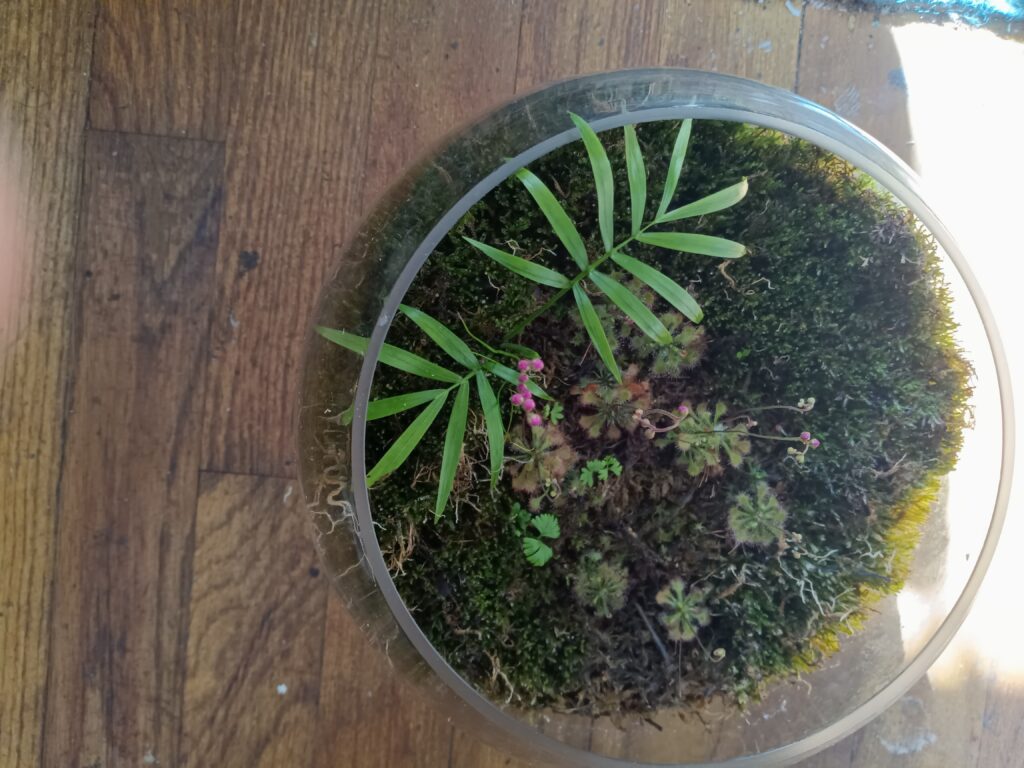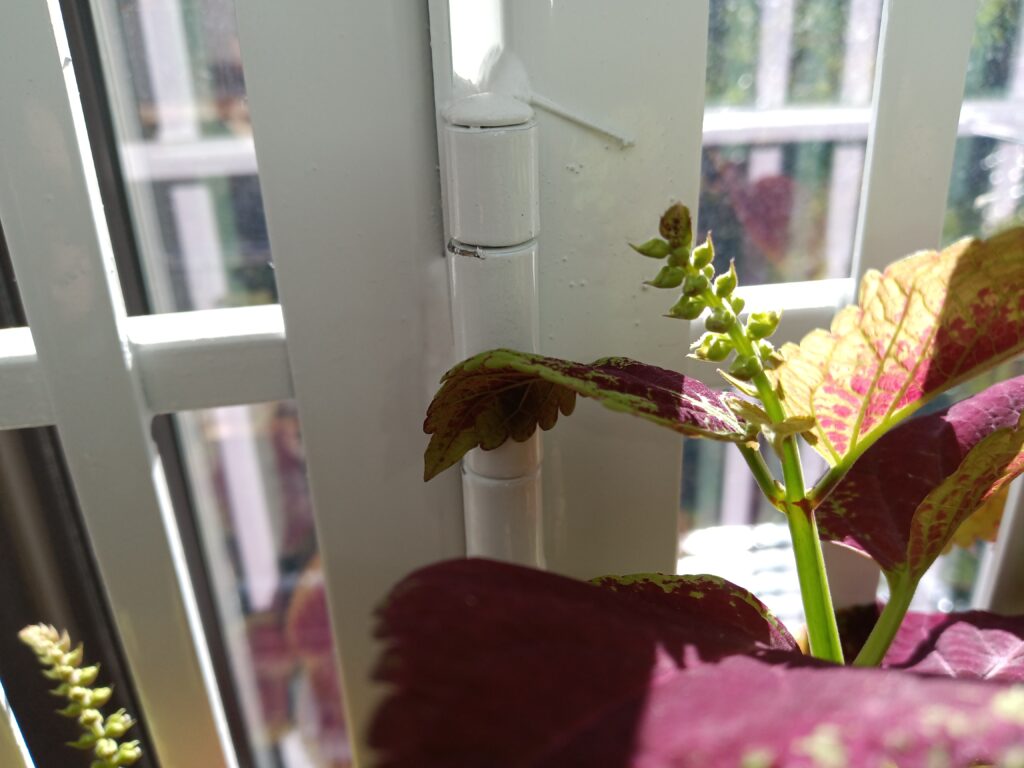I’ve had some difficulties with propagations with my “string of turtles”. It’s more because of its placement, and to add to that, the humidity had dipped well below 50%. Understandable, at this point, there’s the solutions going towards giving this plant a humidity dome, or any covering that traps the humidity. This can be as simple as using plastic wrap to cover the tops of the plant pot. For some plants, this works. For others, it doesn’t and often results in the development of mold, and the end of the plant’s life will soon follow.
I’ve gone the route of looking through the pot with the “string of turtles”, and what I’ve seen is that the plant is well rooted into the top soil, and is still currently growing. For the vines and exposed leaves on the vines, I chose to remove those and put them in another location.
This location, was another terrarium, where I filled it with both sphagnum moss and sheet moss. I of course soaked and squeezed out the excess water, prior to placing them inside of the terrarium, followed by the “string of turtle” cuttings. Since the humidity levels are still quite low, it has to be covered at all times, maybe I’ll remove the cover for an hour or so, on a weekly basis. I’ve decided to do so once a week, after discovering one terrarium I didn’t open for a bit, and well, the smell wasn’t pleasant. Now, it’s not to say that terrariums should always be aired out, because some terrarium designs are permanent, and they are closed permanently. When this happens, you need something extra for its longevity. This is for another topic, and I will discuss this in another entry.
This isn’t the only set of changes with propagations I’ve looked at. The sundews, a good majority of my spoon-leaved sundews died, but from what I found out, sundews of most varieties, can be propagated easily, because they really don’t need much to multiply themselves. In the right conditions, sundews can create clusters of themselves. I know this, because my first, and second, set of spoon-leaved sundews, came in clusters when they were shipped to me.
The conditions I had some of my sundews in, were an open terrarium, where the bottom and surroundings were made up of a similar combination of what I chose for my “string of turtle” cuttings. I used those, with also a couple of parlor palms, just for a different look. I didn’t see what was coming, which were ferns growing out of the sheet moss. Since the terrariums are clear glass, I can fill the bottoms just enough with water, so that the mosses can be soaked in water, along with the sundews. The sundews are also comfortable in boggy conditions, and the sphagnum moss holds lots of moisture, this is perfect to protect the plants from the drops in humidity outside of the terrarium. Win-win!
This worked so well, I’m trying the same template with some more sundews, that are separated from the ones in that open terrarium I just discussed. Since those developed clusters of sundews, all the more reasons to try this out, in another setting. Granted, this will be a bit smaller, but they will still have wet sphagnum moss, and sheet moss, as the base of the setup. For this however, I’ve placed some plastic wrap over the top of the container to start.
Before I’ve tried all of what I mentioned, I also had some other sundew propagations in water, that I transitioned in a mixture of sand and peat moss, and a lot of water. This was placed in a clear container with a lid. For a bit, I had them covered, but as soon as I removed the cover, many started drying out very fast. This may be due to the very low humidity, which made the timing quite bad, so, I replaced the lid that covered these plants. I periodically check on them to see if they will recover. If not, then I know what my mistake was, and I won’t make that mistake again.


